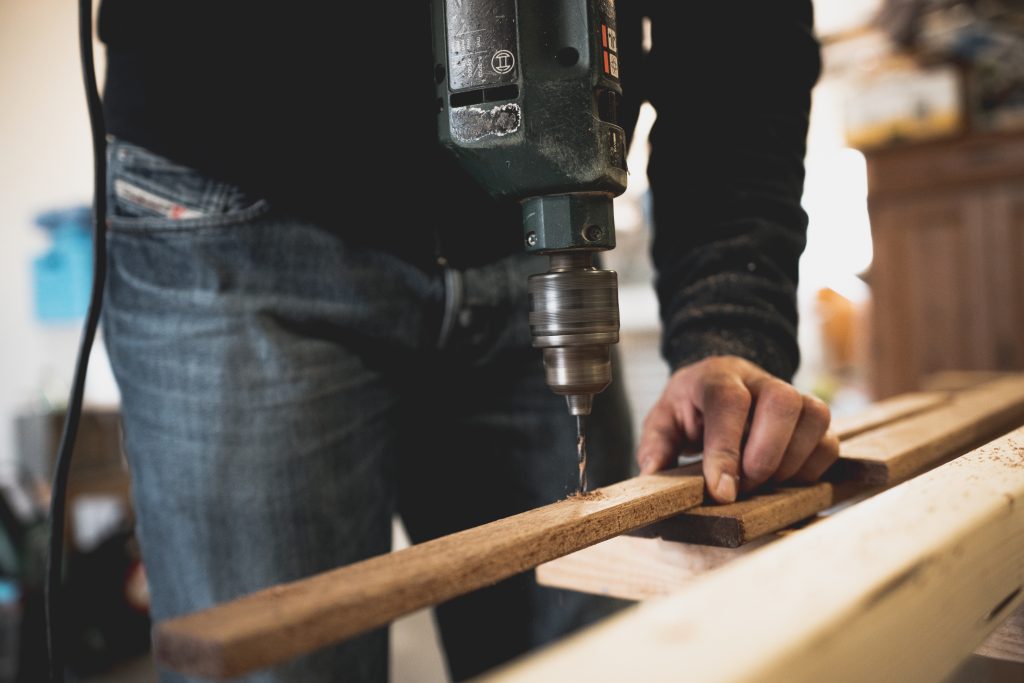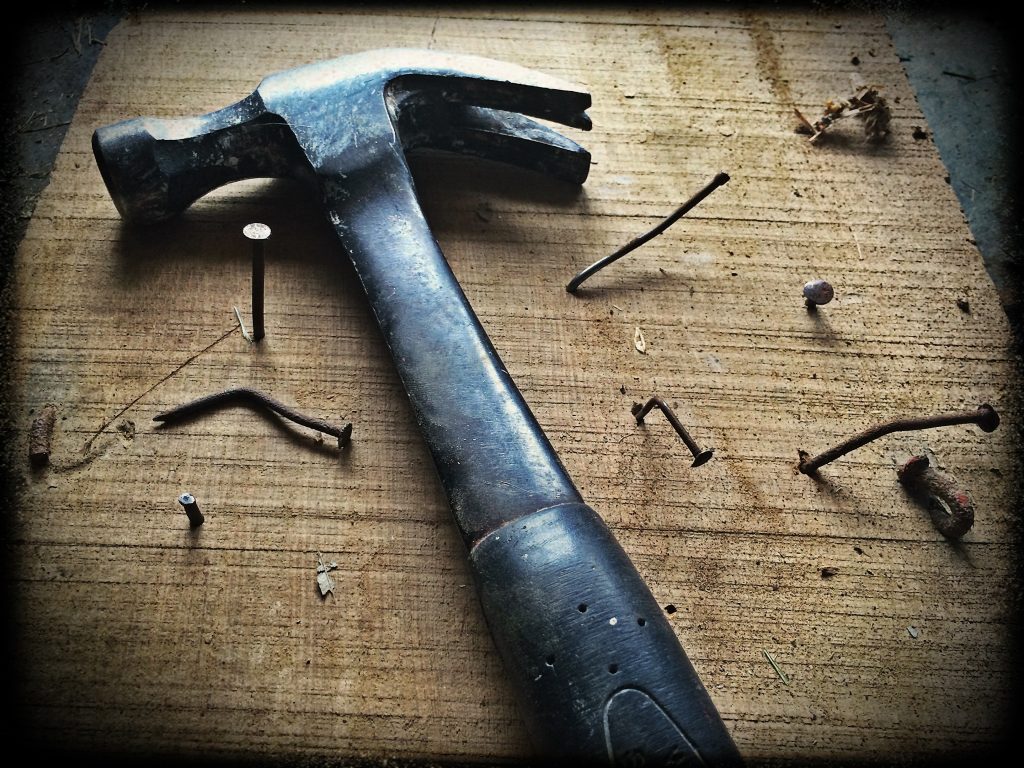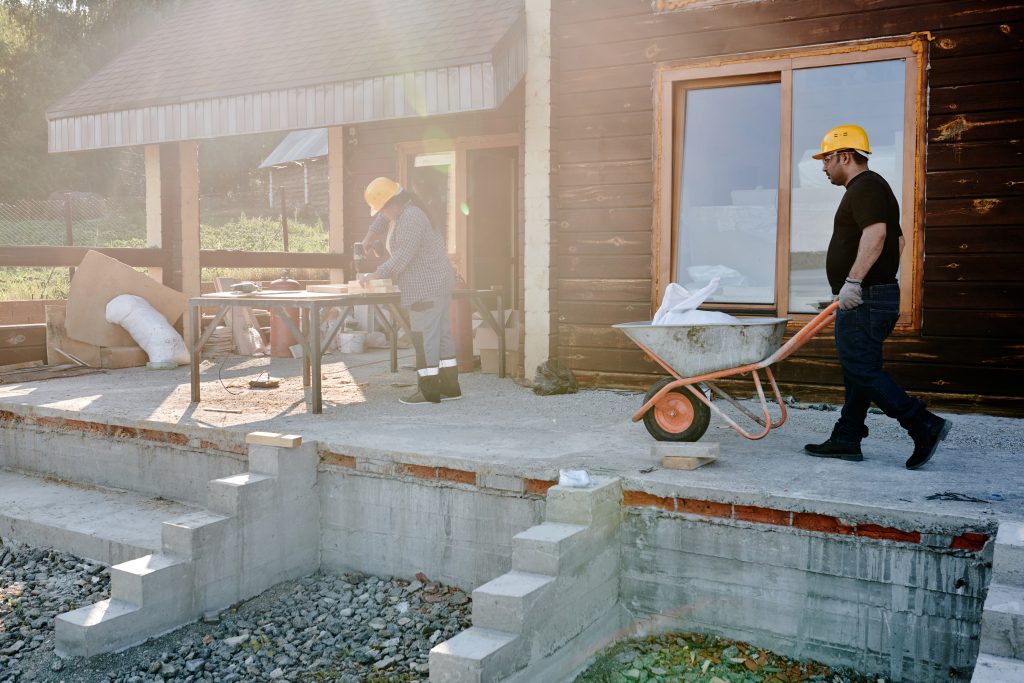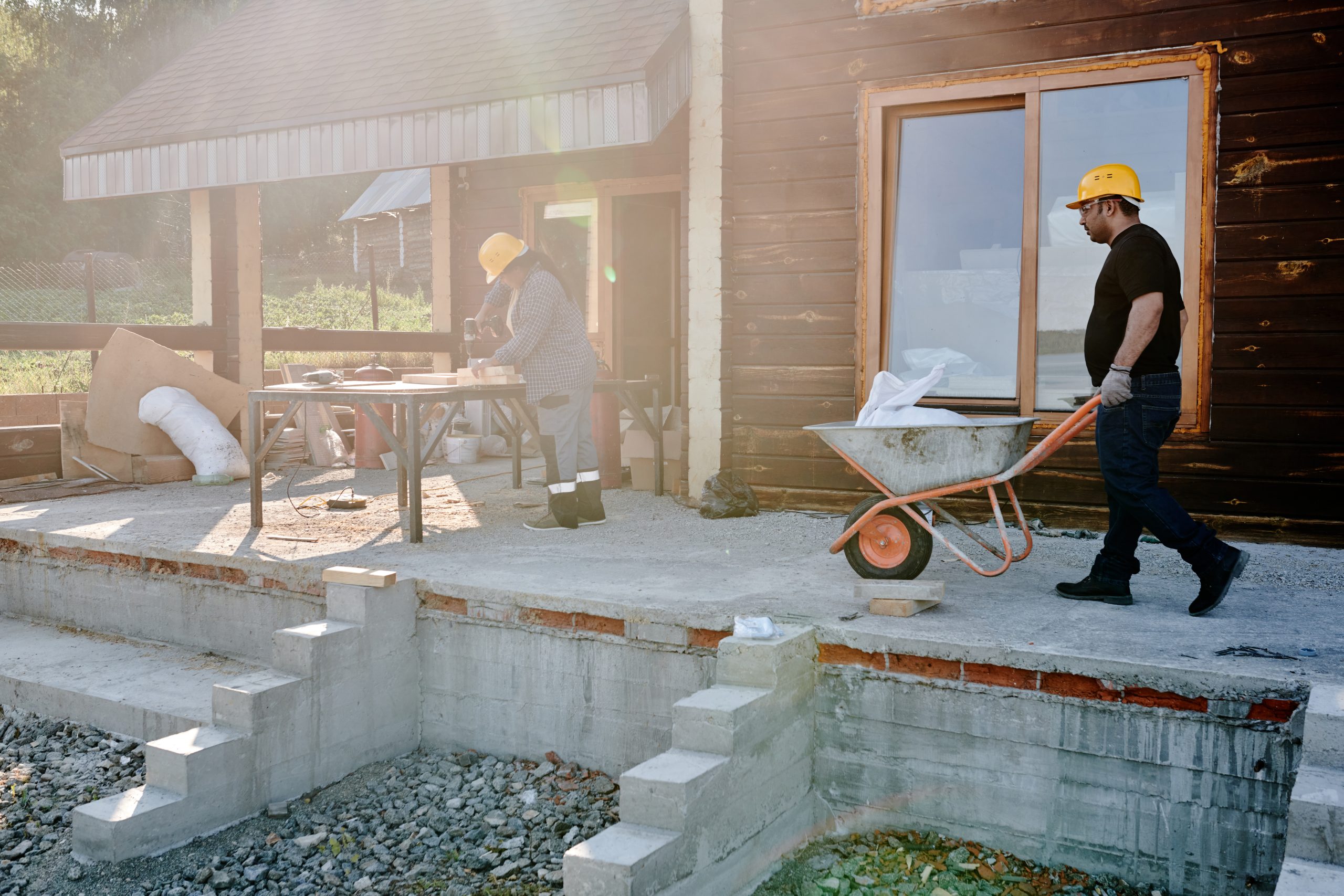Whether you’re a seasoned woodworker or just starting out, achieving perfect angles in your miter joints can be a challenge. But fear not, because in this article, you will discover a wealth of tips and tricks that will help you master the miter joint like a pro. From understanding the basics of miter joints to learning essential techniques for precise measurements and cuts, this comprehensive guide has got you covered. Say goodbye to frustrating misalignments and say hello to flawless angles every time. Get ready to take your woodworking skills to a whole new level with these invaluable tips and tricks.

1. Understanding the Basics of Miter Joints
1.1 What is a Miter Joint?
A miter joint is a type of joint used in woodworking and carpentry to join two pieces of material at an angle. It is commonly used to create corners in projects such as picture frames, crown molding, and door frames. The pieces are cut at complementary angles and fitted together to create a seamless and strong joint.
1.2 Importance of Accurate Angles
Accurate angles are crucial when it comes to creating miter joints. If the angles are not cut precisely, the joint will not fit together properly, resulting in gaps or misalignment. This can affect the overall strength and aesthetics of the joint. Therefore, it is essential to have the right tools and techniques to ensure accurate angle measurements and cuts.
1.3 Types of Miter Joints
There are several types of miter joints that can be used based on the desired outcome and project requirements. Some common types include the basic miter joint, where both pieces are cut at the same angle to form a 90-degree corner; the compound miter joint, which involves cutting the pieces at different angles to create more complex shapes; and the beveled miter joint, where one or both pieces have beveled edges to create a decorative effect.
2. Essential Tools for Perfect Miter Joints
2.1 Miter Saw
A miter saw is a specialized tool designed for making accurate angle cuts. It allows you to set the desired angle and make precise cuts quickly and easily. A miter saw is a valuable tool for any woodworking enthusiast or professional looking to create perfect miter joints.
2.2 Miter Box and Saw
If you don’t have access to a miter saw, a miter box and saw can be a great alternative. The miter box is a guide that holds the workpiece securely in place while you make cuts with a hand saw. Although it requires more manual effort and takes longer than using a miter saw, a miter box can still produce accurate results.
2.3 Table Saw
A table saw is another tool commonly used for making miter cuts. With the help of a miter gauge, it is possible to achieve precise angle cuts by sliding the workpiece through the table saw blade. This tool is versatile and can be used for various woodworking tasks, including creating miter joints.
2.4 Angle Finder
An angle finder is a tool used to measure angles accurately. It is especially helpful when working with compound angles or when the desired angle is not a standard option on your tools. An angle finder allows you to measure the exact angle of your workpiece and transfer it to your cutting tool.
2.5 Clamps
Clamps are an essential tool for holding your workpiece securely in place while making cuts. They ensure stability and prevent the material from shifting during the cutting process. Using clamps can help you achieve clean and accurate cuts, resulting in precise miter joints.
2.6 Measuring Tools
Measuring tools, such as a tape measure, combination square, and protractor, are essential for measuring and marking angles accurately. These tools enable you to determine the correct angle for your miter joint and ensure consistency across multiple cuts.
3. Preparing the Workpiece
3.1 Measuring and Marking the Angles
Before making any cuts, it is crucial to measure and mark the angles accurately on your workpiece. Use a combination square or protractor to measure the desired angle, and then mark it with a pencil or woodworking marking tool. Double-check your measurements to ensure accuracy before proceeding with the cutting process.
3.2 Proper Material Selection
Choosing the right material for your miter joint is essential for achieving a strong and durable joint. Consider factors such as the type of wood, its grain pattern, and its stability. Selecting a high-quality and stable material will increase the chances of achieving a seamless and long-lasting miter joint.
3.3 Cutting and Finishing Techniques
When cutting your workpiece, it is essential to use a sharp saw blade to ensure clean and precise cuts. Take your time and follow the marked lines carefully. After making the cuts, use sandpaper or a file to smooth any rough edges or imperfections. Proper cutting and finishing techniques contribute to the overall quality and appearance of your miter joint.
4. Techniques for Accurate Cutting
4.1 Setting up the Miter Saw
To achieve accurate cuts with a miter saw, it is important to set up the tool correctly. Start by adjusting the angle gauge to the desired angle, and then secure your workpiece against the fence. Make sure the workpiece is securely in place before bringing the saw blade down to make the cut. Repeat the process for each piece you want to join with a miter joint.
4.2 Using a Miter Box and Saw
When using a miter box and saw, place your workpiece in the miter box and align the marked angle with the corresponding slot. Hold the workpiece firmly with one hand while using the other hand to make smooth and controlled cuts with the saw. Take your time and make sure to follow the marked line accurately for a precise miter joint.
4.3 Utilizing a Table Saw
To make accurate miter cuts with a table saw, set the miter gauge to the desired angle and position the workpiece against the gauge. Use a push stick or a push block to guide the workpiece through the blade, while ensuring your hands are a safe distance away from the blade. Take extra precautions when handling a table saw, as it can be a potentially dangerous tool if not used properly.
4.4 Achieving Perfect Compound Angles
When working with compound angles, it is important to carefully plan and mark each cut. Start by determining the primary angle and making the necessary cuts. Then, adjust the angle for the secondary cut and repeat the process. Take your time and make precise cuts to ensure the pieces fit together seamlessly. Double-check your measurements and angles to avoid any misalignment.

5. Joining and Assembling the Miter Joint
5.1 Dry Fitting the Pieces
Before permanently joining the pieces, it is recommended to perform a dry fit. This involves fitting the pieces together without any adhesives or fasteners to ensure that they align perfectly. If there are any gaps or misalignments, make the necessary adjustments before moving on to the next step.
5.2 Gluing the Joint
Once the pieces fit together seamlessly, it is time to glue the joint. Apply a high-quality woodworking glue to the mating surfaces and press the pieces together firmly. Wipe off any excess glue with a damp cloth. Use clamps to hold the pieces together until the glue dries and creates a strong bond.
5.3 Reinforcing with Splines or Biscuits
For added strength and stability, you can reinforce your miter joint with splines or biscuits. Splines are thin strips of wood inserted into slots cut across the joint, while biscuits are small oval-shaped discs made of compressed wood. Both options help to strengthen the joint and prevent any potential movement over time.
5.4 Using Pocket Screws
Another method for joining miter joints is by using pocket screws. Pocket screws are self-tapping screws that can be used to join pieces at an angle. They create a strong and secure joint, especially when combined with glue. The screws are concealed within the joint, resulting in a clean and professional finish.
6. Achieving Seamless Finishes
6.1 Sanding and Smoothing the Joint
After the glue has dried, it is time to sand and smooth the joint. Use sandpaper or a sanding block to remove any rough edges and imperfections. Start with a coarse grit sandpaper and gradually move to finer grits until the joint feels smooth to the touch. Sanding helps to create a seamless and professional finish.
6.2 Filling Gaps and Imperfections
If there are any small gaps or imperfections in the joint, you can use a wood filler or putty to fill them in. Choose a filler that matches the color of your workpiece and apply it to the affected areas. Once dry, sand the filled areas lightly to ensure a flush and smooth surface.
6.3 Applying Stains or Paints
To enhance the appearance of your miter joint and create a cohesive finish, you can apply stains or paints. Choose a stain or paint that complements the color and type of wood you are working with. Apply multiple coats, allowing each coat to dry fully before applying the next, and finish with a clear protective coat for added durability.

7. Troubleshooting Common Issues
7.1 Gaps in the Joint
If you encounter gaps in your miter joint, it is likely due to inaccurately cut angles or improper assembly. To fix this issue, carefully measure and adjust the angles to ensure a better fit. Additionally, using clamps during assembly can help close any gaps and hold the joint firmly in place while the glue dries.
7.2 Misaligned Angles
Misalignment of angles can occur if the measurements or cuts were not made accurately. To address this issue, carefully remeasure and recut the angles. Take your time and make precise cuts to ensure the pieces fit together correctly. Dry fitting the pieces before gluing can help identify any misalignment issues and allow for adjustments.
7.3 Uneven Joint Alignment
Uneven joint alignment can be caused by uneven material thickness or improper cutting techniques. To resolve this issue, ensure the material is of consistent thickness and consider using a jointer or planer to flatten any uneven surfaces. Additionally, double-check your measurements and use the appropriate cutting tools with precise angles.
8. Advanced Techniques for Miter Joints
8.1 Creating Decorative Miter Joints
To add visual interest to your miter joints, you can experiment with decorative techniques. These may include adding contrasting wood splines, inlaying decorative elements, or using intricate joinery methods. These techniques require advanced woodworking skills and attention to detail but can result in stunning and unique miter joints.
8.2 Making Beveled Miter Joints
Beveled miter joints involve cutting a beveled edge on one or both pieces before joining them. This creates a visually appealing angled edge that adds dimension and style to the joint. Beveled miter joints are often used in furniture and cabinetry to create a distinctive look.
8.3 Incorporating Splines or Keys
By incorporating splines or keys into your miter joint, you can add strength, stability, and decorative appeal. Splines or keys are typically made from contrasting wood and inserted into slots cut across the joint. They not only reinforce the joint but also serve as eye-catching design elements.
9. Safety Precautions and Best Practices
9.1 Eye and Ear Protection
When working with woodworking tools, it is essential to prioritize safety. Always wear safety glasses or goggles to protect your eyes from flying debris. Additionally, use hearing protection, such as earplugs or earmuffs, to prevent damage to your hearing due to prolonged exposure to loud noises.
9.2 Proper Tool Handling
Proper handling and operation of woodworking tools are crucial for safety and accurate results. Read and follow the manufacturer’s instructions for each tool to ensure safe operation. Keep your hands and fingers away from the cutting areas and use push sticks or blocks when necessary. Always turn off and unplug power tools when not in use.
9.3 Securing Workpieces
Securely clamp your workpiece before making any cuts. This ensures stability and prevents the material from shifting during the cutting process. The workpiece should be firmly held in place to minimize the risk of accidents or inaccurate cuts.
9.4 Working in a Well-Ventilated Area
When sanding, applying finishes, or working with adhesives, it is important to work in a well-ventilated area. Use respiratory protection, such as a dust mask or respirator, to avoid inhaling harmful dust particles or fumes. Proper ventilation helps maintain a safe and healthy working environment.
10. Practice and Patience for Mastery
10.1 Starting with Simple Projects
Miter joints can be challenging to master, especially for beginners. It is advisable to start with simple projects, such as picture frames or small boxes, to practice your skills. As you gain experience and confidence, you can gradually move on to more complex projects that require advanced miter joint techniques.
10.2 Learning from Mistakes
Mistakes are inevitable when working with miter joints, especially when you are just starting. Instead of getting discouraged, view each mistake as an opportunity to learn and improve your technique. Analyze what went wrong, make the necessary adjustments, and remember that practice makes perfect.
10.3 Developing Precision and Consistency
Miter joints require precision and consistency to achieve perfect angles every time. Develop your measuring, marking, and cutting skills by practicing regularly. Pay attention to details and strive for accuracy in every step of the process. With time and practice, you will develop the necessary skills to create impeccable miter joints.


